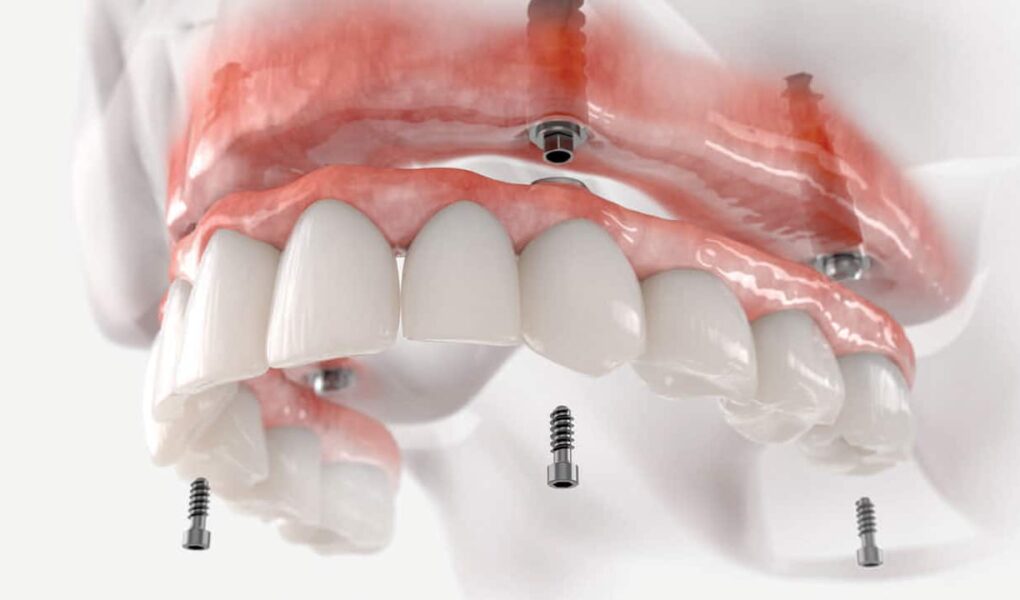When it comes to implant restorations Lakewood Ranch FL, several factors contribute to the success and longevity of the restoration. One of the most critical, yet often overlooked, aspects of implant restoration is occlusion. Occlusion refers to the relationship between the upper and lower teeth when they come into contact with each other, and proper occlusion is essential for ensuring that implant restorations function properly and withstand the forces of chewing and biting. Neglecting occlusal considerations can lead to a range of complications, including implant failure, bone loss, and prosthetic fractures.
In this article, we’ll explore the importance of occlusion in implant restoration and discuss the clinical considerations that dentists and prosthodontists must take into account when designing and delivering implant restorations.
What Are Implant Restorations?
Implant restoration refers to the process of restoring a missing tooth or teeth using a dental implant, which is a surgically placed artificial tooth root made of titanium or other materials. The implant is inserted into the jawbone, where it osseointegrates, or fuses, with the surrounding bone tissue. Once the implant has integrated, a prosthetic tooth, or crown, is attached to the implant using an abutment, creating a natural-looking and functioning tooth. Implant restoration can be used to replace a single tooth, multiple teeth, or even a full arch of teeth, offering a durable, long-lasting, and aesthetically pleasing solution for individuals with missing teeth.
What is The Role of Occlusion in Implant Restoration?
Occlusion plays a crucial role in implant restoration, and its importance cannot be overstated. Here are some key aspects of the role of occlusion in implant restoration:
Distribution of Forces
- Even force distribution: Occlusion ensures that the forces of chewing and biting are evenly distributed across the dental implant, preventing excessive stress and strain on individual implants.
- Prevention of implant overload: Proper occlusion prevents implant overload, which can lead to implant failure, bone loss, and other complications.
Implant Stability and Longevity
- Maintenance of implant stability: Occlusion helps maintain implant stability by ensuring that the implants are subjected to balanced forces, preventing micromotion and implant mobility.
- Prevention of bone loss: Proper occlusion prevents bone loss by distributing forces evenly, reducing the risk of bone resorption and implant failure.
Aesthetics and Function
- Aesthetically pleasing results: Occlusion plays a critical role in achieving aesthetically pleasing results, as a harmonious occlusal relationship is essential for a natural-looking smile.
- Optimal function: Proper occlusion ensures optimal function, allowing patients to chew, speak, and smile with confidence.
What Are The Consequences of Neglecting Occlusal Considerations?
Neglecting occlusal considerations in implant restoration can lead to various complications, including:
- Implant failure: Implant overload and excessive stress can lead to implant failure, requiring costly and time-consuming revisions.
- Bone loss: Poor occlusion can lead to bone loss, as excessive stress and strain on the surrounding bone can cause resorption and loss of bone density.
- Prosthetic complications: Neglecting occlusal considerations can also lead to prosthetic complications, such as fractures, loosening, or dislodgement of the prosthetic teeth.
- Patient discomfort and dissatisfaction: Poor occlusion can lead to patient discomfort and dissatisfaction, as uneven forces and excessive stress can cause pain, clicking, or popping of the jaw.
What Are The Clinical Considerations For Occlusion in Implant Restoration?
To ensure proper occlusion in implant restoration, clinicians should consider the following:
- Occlusal analysis: Perform a thorough occlusal analysis to identify any occlusal discrepancies or irregularities.
- Implant placement: Ensure proper implant placement, taking into account the occlusal relationship and the distribution of forces.
- Prosthetic design: Design the prosthetic teeth to ensure proper occlusion, taking into account the patient’s occlusal scheme and the distribution of forces.
- Occlusal adjustment: Perform occlusal adjustments as necessary to ensure proper occlusion and prevent implant overload or prosthetic complications.
By understanding the importance of occlusion and taking into account clinical considerations, clinicians can ensure proper occlusion and provide patients with functional, aesthetically pleasing, and long-lasting dental implants.




